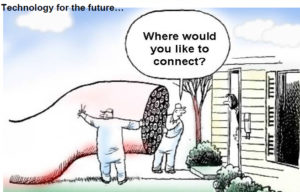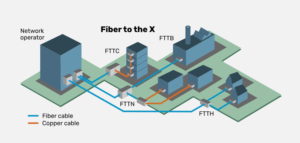Fiber to the home (FTTH), also called “fiber to the premises” (FTTP), is the installation and use of optical fiber from a central point directly to individual buildings such as residences, apartment buildings and businesses to provide unprecedented high-speed Internet access. FTTH dramatically increases the connection speeds available to computer users compared with technologies now used in most places. Fiber to the home is a relatively new and fast growing method of providing vastly higher bandwidth to consumers and businesses, and thereby enabling more robust video, internet and voice services.

While FTTH promises connection speeds of up to 100 megabits per second — 20 to 100 times as fast as a typical cable modem or DSL (Digital Subscriber Line) connection — implementing FTTH on a large scale will be costly because it will require installation of new cable sets over the “last links” from existing optical fiber cables to individual users. Some communities currently enjoy “fiber to the curb” (FTTC) service, which refers to the installation and use of optical fiber cable to the curbs near homes or businesses, with a “copper” medium carrying the signals between the curb and the end users.

Further, as cable modem and DSL providers are struggling to squeeze increments of higher bandwidth out of their technologies, ongoing improvements in fiber optic equipment are constantly increasing available bandwidth without having to change the fiber. That’s why fiber networks are said to be “future proof.”
